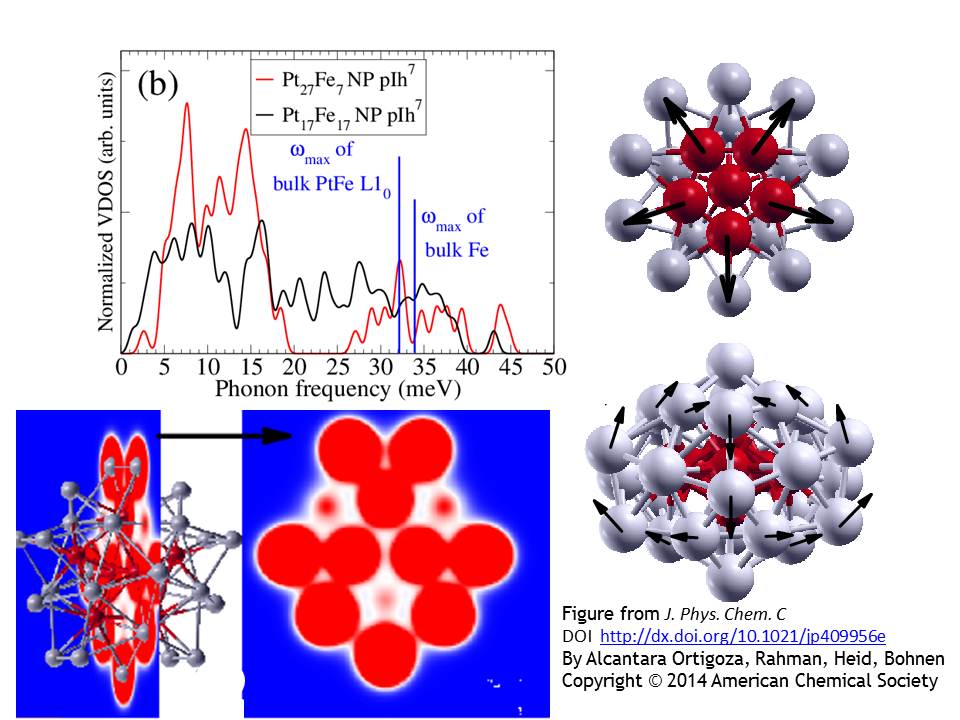 The low- and high-energy tails of the phonon density of states (PDOS) of transition-metal nanoparticles is enhanced with respect to that of their bulk counterparts. For particles in the sub-nanometer scale, we propose a rationale for this fact based on ab initio calculations of their charge density and of the frequency and displacement pattern of their vibrational modes. I find that the radial breathing and non-radial vibrations — analogous to the pulsations observed in variable stars — correspond to the highest and lowest frequencies, respectively. This result is traced to the radial atomic distribution and the charge density distribution particular to the low-coordinated atoms, both of which give rise to modes that – only apparently – have no counterpart in the bulk. We find that the enhanced PDOS at low frequencies is at least partly due to the relatively small number of modes that nanoparticles can sustain. Moreover, we find that clusters with bulk-like ordering render fewer and less stiff modes above the bulk limit than cluster with lower degree of symmetry. I have analyzed the vibrational properties of Ag27Cu7 , Cu38 and three PtFe nanoclusters [1]. Please visit the page Animations to see the eigenfrequency and animation of each eigenmode.
The low- and high-energy tails of the phonon density of states (PDOS) of transition-metal nanoparticles is enhanced with respect to that of their bulk counterparts. For particles in the sub-nanometer scale, we propose a rationale for this fact based on ab initio calculations of their charge density and of the frequency and displacement pattern of their vibrational modes. I find that the radial breathing and non-radial vibrations — analogous to the pulsations observed in variable stars — correspond to the highest and lowest frequencies, respectively. This result is traced to the radial atomic distribution and the charge density distribution particular to the low-coordinated atoms, both of which give rise to modes that – only apparently – have no counterpart in the bulk. We find that the enhanced PDOS at low frequencies is at least partly due to the relatively small number of modes that nanoparticles can sustain. Moreover, we find that clusters with bulk-like ordering render fewer and less stiff modes above the bulk limit than cluster with lower degree of symmetry. I have analyzed the vibrational properties of Ag27Cu7 , Cu38 and three PtFe nanoclusters [1]. Please visit the page Animations to see the eigenfrequency and animation of each eigenmode.
References
[1] The anomalously soft and stiff modes of transition-metal nanoparticles; Marisol Alcántara Ortigoza, Rolf Heid, Klaus-Peter Bohnen, and Talat S. Rahman; Accepted in J. Phys. Chem.C. DOI assigned to this article is http://dx.doi.org/10.1021/jp409956e


